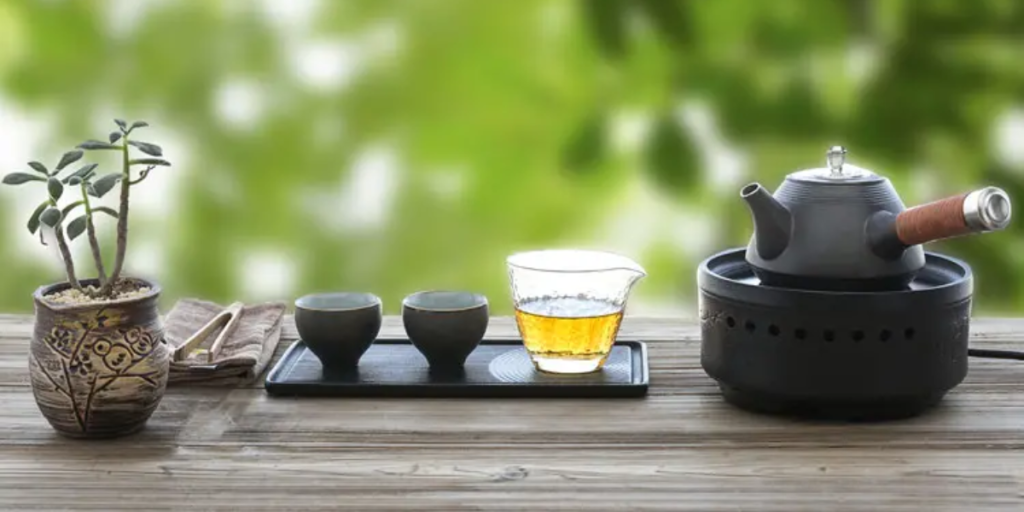Step into the captivating realm of Chinese tea, where ancient traditions, delicate flavors, and meticulous craftsmanship converge. For thousands of years, tea has played a central role in Chinese culture, celebrated not only for its taste but also for its medicinal properties and the ceremonial rituals that accompany its preparation and consumption. In this article, we will embark on a journey through time, delving into the rich history of Chinese tea and uncovering the artistry behind its exquisite preparation.
A Tale of Tradition and Discovery
The origins of tea can be traced back to ancient China, where its discovery is steeped in legends. One of the most renowned tales tells of Emperor Shen Nong, who, in 2737 BC, was boiling water when a tea leaf accidentally fell into his pot. Intrigued by the resulting infusion, he tasted the liquid and discovered the refreshing and invigorating qualities of tea. This serendipitous encounter marked the beginning of China’s love affair with tea, and its popularity spread rapidly across the nation.
Tea Varieties and Their Characteristics
China boasts an impressive array of tea varieties, each with its own distinct characteristics and brewing methods. From the delicate green teas, such as Longjing and Biluochun, to the fragrant oolongs, including Tie Guan Yin and Da Hong Pao, and the bold and robust black teas, like Keemun and Lapsang Souchong, there is a tea to suit every taste preference. Additionally, China is renowned for its unique post-fermented teas, such as Pu-erh, which develop complex flavors and improve with age. Exploring the diverse world of Chinese teas is an adventure in itself, with each cup offering a glimpse into the rich tapestry of Chinese tea culture.
The Art of Tea Preparation
Preparing tea in China is not merely a mundane task but an art form that requires precision, knowledge, and a deep appreciation for the subtleties of flavor. The following are the essential steps involved in the Chinese tea preparation process:
- Tea Selection: Choosing high-quality tea leaves is paramount. Factors such as appearance, aroma, and freshness are carefully considered when selecting the ideal tea for brewing.
- Tea-Ware Selection: Chinese tea enthusiasts value the use of specific tea-wares to enhance the brewing experience. These include teapots, tea cups, tea trays, and tea strainers, each designed to optimize the tea’s flavor and aesthetics.
- Water Temperature: Different types of tea require specific water temperatures to extract the optimal flavors. Green teas are typically brewed with water at lower temperatures, while black teas often benefit from hotter water.
- Tea-Rinsing: Before the actual brewing begins, a brief rinse is performed to awaken the tea leaves, remove any impurities, and allow their aromas to unfold.
- Tea Brewing: The precise brewing time and the number of infusions vary depending on the type of tea. Some teas, like oolongs, are steeped multiple times to reveal the tea’s layers of flavor gradually.
- Tea Presentation: Chinese tea culture values the visual aspect of tea drinking. The color of the tea liquor, the clarity of the tea cups, and the elegance of the tea set all contribute to the overall sensory experience.
- Tea Appreciation: Savoring tea is an art in itself. The tea’s aroma, taste, and mouthfeel are carefully observed and appreciated. Traditional tea ceremonies often involve meditation and mindful presence, allowing one to fully immerse in the beauty of the tea-drinking experience.
Health Benefits and Cultural Significance
Tea is revered in Chinese culture not only for its delightful flavors but also for its numerous health benefits. Chinese traditional medicine recognizes tea’s ability to aid digestion, improve mental alertness, and boost the immune system. Additionally, tea is believed to promote tranquility and foster a sense of harmony between mind and body. These qualities have made tea an integral part of daily life, social gatherings, and important ceremonies throughout China’s history.
Preserving and Sharing the Tea Culture
The rich heritage of Chinese tea continues to be preserved and shared through generations. Tea houses, where people gather to enjoy tea and engage in intellectual discourse, still thrive in cities across China. Moreover, tea appreciation classes and workshops provide opportunities for tea enthusiasts to deepen their knowledge and refine their brewing skills. As China’s tea culture extends its reach beyond its borders, tea ceremonies and tastings have become popular attractions for visitors seeking a glimpse into the artistry and elegance of Chinese tea traditions.
Conclusion:
The art of Chinese tea is a tapestry woven with centuries of tradition, craftsmanship, and a deep reverence for nature’s gifts. As you embark on your own tea journey, take a moment to appreciate the history, variety, and meticulous preparation techniques that make Chinese tea a source of wonder and delight. Whether you choose to savor a fragrant green tea or indulge in the boldness of a black tea, the art of Chinese tea invites you to immerse yourself in a symphony of flavor, culture, and timeless beauty.
